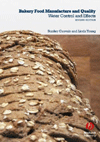Why New Products Succeed ... and Fail, Part 2
By Jennifer Zegler
Industry experts share their tips on what makes or breaks the launch of a new product.
Editor’s Note: Part I of “Why New Products Succeed … and Fail” appeared in the April issue of Snack Food & Wholesale Bakery.
New products are fighting for notoriety on the shelves from consumers who seem to be paying less attention — and not just the shopper talking on her cell phone in aisle seven. Meanwhile, industry experts continue to classify consumers by a myriad of categories based on their shopping habits. Those who are convenience-, health- or value-minded all make their decisions on different levels. And those decisions only take a matter of seconds to make.
Therein lies the challenge for new products manufacturers.
Here, two experts suggest some do’s and don’ts of new product development. Joan Schneider is president of Schneider Associates, a Boston-based public relations and marketing firm, which conducts the annual Schneider/Stagnito Communications, Inc. “Most Memorable New Product Launch Survey.” Marilyn Raymond is a managing director for NewProductWorks, Ann Arbor, Mich., which is a new product development consulting organization with a collection of more than 80,000 new and once-new products.
Do predict tomorrow’s version of today’s trend. Don’t jump on today’s bandwagon.
Trends are important indicators of consumer preferences, but just like acid-wash jeans or low-carb diets, they run their course. Since the time length of research and development is not set in stone, it’s no wonder new products can be launched at inopportune times during a trend. It can be due to faulty prediction or delayed launch, but a new product might not always hit on trend.
According to Raymond, consumers are motivated to buy for one of four reasons: convenience, wellness, safety and gratification. These reasons have an effect on trends because they lead to motivating purchases.
“Innovation is evolutionary,” she says. “When looking at trends, we think ‘What is the next step in taste, health or convenience?’ Manufacturers should borrow from categories that have more advanced ways of communicating these drivers. Trends are what is happening today in the marketplace. We try to predict what will happen tomorrow.”
Inspiration can come from a plethora of places. Raymond recommends checking out other categories. Although the category may not have a logical connection to baked goods or snack food, their trends may soon move over … or not.
“If you’re thinking low or no preservatives, that may not play big in snacking motivators,” she says. “Organic is something big. Frito-Lay is trying to do it, but it’s a small niche of a category. When consumers get a snack, they are in a need state. Taste may be number one and then, maybe, easy to carry, if you are eating out of the house. And if 99% of the foods they eat are organic, then it would be good if it’s organic, but most people are not looking for organic snacks. What makes success is to dial up the key motivators by borrowing from other categories.”
Do address core consumer needs. Don’t just be a “me, too” idea.
Consumers don’t often venture to the store without a reason, and although those reasons might all be on a list that remained at home on the counter, new products must have an appeal to get a second glance, and even more appeal to achieve placement in the cart. Needless to say, leaving a lasting impression that will lead to repurchasing is tougher yet.
Raymond cites gratification and convenience as main motivators for purchasing snacks. The remaining two reasons, wellness and safety, are secondary benefits that should be addressed later in development.
“One might want to advance taste benefits by moving beyond, ‘cheesy taste’ to an offering that dimensionalizes better cheese taste, such as ‘100% real cheese,’ ‘aged cheddar cheese’ or ‘zesty cheese taste,’” Raymond says. “Another possible innovation path is to continue to communicate ‘cheesy taste’ and advance convenience benefits — perhaps a cupholder package. Either of these will likely be more compelling than, say, offering an allergen-free product or a whole wheat version of this cheesy snack.”
Addressing those needs has become a challenge to companies. They may try to take the easy way out and build on an existing product or just copy one entirely. Raymond cites “bite” forms of popular products as a form of copycat action.
“Manufacturers have a notion that one thing sells,” she says. “But actually, you have a fair bit of freedom to dimensionalize the core benefits in many different ways. If gratification has been the primary driver, look at advanced expression of connoting taste. If it’s taste, then make it bold or hot. But also consider other avenues, such as more fun or other sensory triggers.”
Since that “one thing” might not sell, Raymond says tapping into an emotional need can be even more compelling.
“Determine what emotions consumers are associating with or trying to satisfy in any given usage occasion,” she says. “Is the eating occasion about trying to alter a mood or create a mood? For example, relaxing at the TV with munchies or carving out a ‘me time’ or ‘social time.’”
Do consumer research. Don’t dismiss product testing.
This could be the most logical tip, but it can easily be overlooked by manufacturers looking to rush a product to market or relying on a great idea.
As Schneider emphasizes, “Consumer insights are a big factor. Does anyone really want this product? Consumer and market research is important.”
Many companies are turning to Internet panels to lead initial development. Databases with thousands of consumers who represent regions across the nation can help companies to quickly and inexpensively poll the opinions of the masses. The results can inspire and reshape new product development.
Once the product is at a taste-able stage, the traditional consumer panel can gauge a product’s favorability. A panel’s reactions may not guarantee that it will fly off shelves, but it will show if a redesign is necessary to please the public. If so, it’s best to return the reformulated product back to a panel. In the words of the shampoo bottle, “Lather, rinse and repeat as needed.”
Do sample. Don’t scrimp on allocating money for promotion.
From sidewalk giveaways to in-store samples, consumers love to try the latest products, especially when there is no effect on their wallets. Companies, on the other hand, try to avoid sampling and promotions because of their high cost. But the results, Schneider suggests, can be monumental.
“We found out from our ‘Most Memorable New Product Launch Survey’ that people love to try new products, and 81% sometimes buy new products they’ve sampled,” she says. “I never realized sampling was so powerful. It’s expensive, but incredibly powerful.”
Sampling events can vary from extreme to mundane, but the impact can launch a new product to immediate success. Outdoor sampling and promotional efforts attract interested consumers who not only will talk about the product, but might go to a store and purchase it. After all, the goal of sampling is to promote trial and purchase, she says.
“Word of mouth is a huge thing for snack food,” Schneider says. “It’s low in cost and provides high impact. We found that 65% of people often recommend new products to family and friends. Companies should try and get new products into the hands of consumers so they go out and talk about it.”
For those companies that do not think promotions and sampling are worth the investment, Schneider insists that these types of campaigns produce a “big bang” for the buck.
“I’m always baffled by companies who are willing to invest millions in R&D and not even $100,000 in promotion,” she says. “They spend millions to invent new products and then are frugal when it comes to creating the budget for the launch. Companies need to understand there’s no sense spending millions on R&D if you don’t put the same energy and investment into creating an integrated campaign. By coupling strong R&D with a compelling launch, consumer product companies will see a huge surge in new product launch success.”
Do consider the audience. Don’t devalue the retail channel.
The landscape of shopping is beginning to change. Groups of consumers are more concerned with time or health and more willing to visit multiple stores. Now, more than ever, where a new product will be sold is an important concern.
“One thing we’ve seen over the years is to be mindful of what channel your product is going into,” Raymond says. “Companies are usually researching consumers from the mass channel to launch new products that are sold to other channels. Many don’t consider, what does a club shopper versus a convenient store shopper versus a grocery store shopper want? What are the needs for those categories? One size doesn’t fit all across channel and consumers.” SF&WB
The Success of ‘Soft & Smooth’
The top ten items on the 2005 Schneider/Stagnito Communication, Inc. “Most Memorable New Product Launch Survey” are technology, beverages and household cleaning products, but one baked good item made an impact on the 1,000 people surveyed. Sara Lee’s Soft & Smooth whole grain white bread, launched in July, landed in the survey’s top 40. Its popularity cannot be credited solely to its innovation, but to its promotional campaign.
“(Sara Lee Soft & Smooth bread is) interesting because it’s geared toward parents,” Schneider says. “It was launched on July 19, 2005, with a $30 million campaign. It had the largest coupon introduction ever, and some of those coupons were for free bread. They issued 115 million coupons, and 20 million of those were for free bread — so they were inviting people to try and then buy this innovative new product.”
To promote this new “better-for-you” white bread, the company also conducted sampling to introduce moms to this tasty choice. With families in mind, Sara Lee distributed slices of Soft & Smooth whole grain white bread at professional and minor league baseball games throughout the summer.



